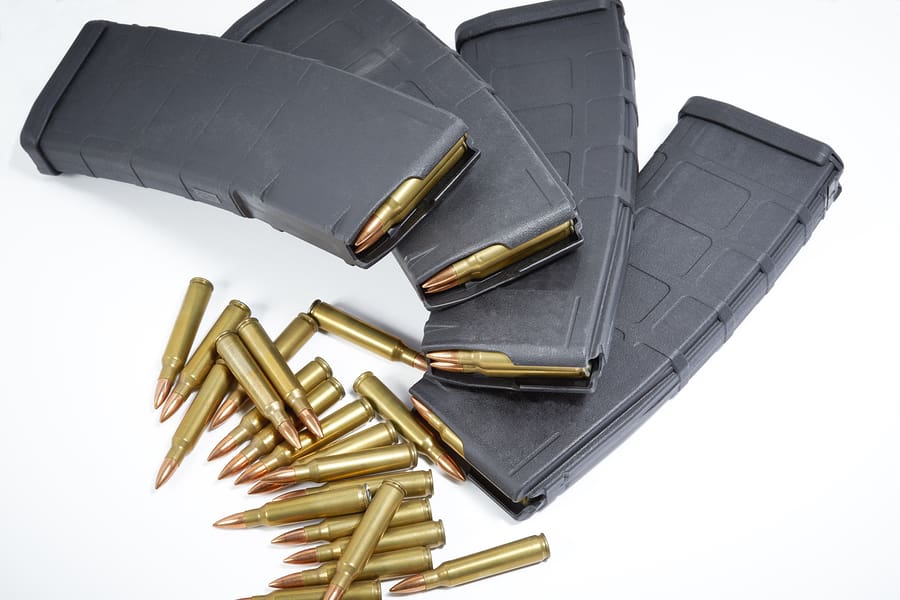“You don’t need to be able to put 200 rounds through [a printable gun]…It only has to fire once. But even if the design is a little unworkable, it doesn’t matter, as long as it has that guarantee of lethality.” – University of Texas law student Cody Wilson, 3D-Printable Gun Project Hits Its Fundraising Goal Despite Being Booted Off Indiegogo, forbes.com





Great ideas that go against the grain of society’s vocal minority and authority’s fear of losing control will be shot down on sight. Revolutionary ideas will find a way to get around this type of censorship. Best wishes to this incredible project. May it change the face of the world.
+1
Yes. The best proof against the statist assumption of how stupid people are and how they constantly need guidance by the elite is how much time the bureaucrats spend playing catchup as the stupid unwashed masses find ways around their bureaucracy.
A modern “Liberator” or zip gun sort of thing? I suppose there’s some utility there.
This is a project worth following. Interesting for its firearm implications and as a purely technological effort. I do wish the goal is something more than one shot, though.
Just as with every new tech, the first editions are improved upon. To say the goal is a single shot weapon is to imply the world will end so soon that no further goal is possible.
althigh the concept of being able to print/make my own guns and designs is great, I completely disagree with the quote. If the gun is only good to be shot once or twice before you need to grab the next then you are going to be in trouble when the first shot misses anything vital. secondly would you have any faith in a gun only designed to fire once or twice not to blow up on you if you used say +P rounds?
As time goes on the technology will advance. But right now this would be perfect for people living in craphole countries. Like the Liberator, it could be used to get another better gun.
Its just proof of concept.
Their plan is to first start with a proof on concept single shot/single use .22. Once they’re figured that out, they plan on designing a semiauto pistol.
Opponents of this will simply see these as the next saturday night specials. Which they most certainly will be, once 3D printers become cheap enough. Worst case, I see this leading to more calls for tighter ammo/component restrictions.
I think some of you are implying more than I intended to say in your responses.
even the Liberator or DEER gun were capable of being used more than 2-3 times in the case of the Liberator it was sent with a box of 5-10 rounds simply put designing a gun that can be shot safely only once is not much of a proof of concept. it does not matter how neat it is and trust me it would be neat but simply saying i can make something that goes bang once and then has to be thrown away is something i can already do its called a zip gun.
if the saying is perfect is the enemy of good enough then they are committing the sin of saying close enough is the enemy of good enough. this is not a game of horse shoes and I dont want my gun to turn into a hand grenade.
I’m fascinated by this.
I’m glad they’re using the RepRap instead of, say, the Makerbot. The RepRap is self-replicating: 1 RepRap can make another. So as long as there is 1 RepRap out there, more can be made to make more guns. That’s the idea, anyway.
That’s some Skynet kinda stuff right there.
I think this is a great exercise and I wish them success.
But, but, but, people making things for themselves? How can that be allowed?
Still – you can’t print ammo, can you?
As a former reloader, yes, yes you can “print your own ammo”. The Israelis made rifle cartridges out of lipstick tubes. All it takes is the will and a little desperation to overcome most obstacles.
no but you can melt brass buy powder and cast your own bullets and make your own. Although im not that diehard in my reloading habit I know a few people who collect 22 brass to melt down and shape into Extinct calibers.
Someone should let him know that “he didn’t build that”….
Seriously though, this is a great concept, and if successful, guaranteed to garner extreme attention from the alphabets.
This is yet another example of how it is utterly impossible to control objects. There are now and will be even more countless ways to make objects — whether they are paper weights or firearms.
An average person with a few simple tools can make a working, single shot firearm in one afternoon with a few dollars in hardware store parts. And for the person willing to work on it for a few days, they can make a fairly nice working firearm. Keep in mind such a gun would not be super accurate. However it would be reliable and functional.
Absolutely.
Given the tools a gunsmith has, one can make a pretty nice gun in a week from steel found in a junkyard. And it’ll be accurate, too. And he can make the cases for the ammo. If he’s good with chemistry (and some are), he can then set about making powder and dealing with the priming issues.
Once you have a lathe… a whole world of barriers to making firearms suddenly fall. The secret is to get a good lathe of the right size and learn how to really use it.
Folks should start noodling around to read up on one of the most storied gunsmiths of 100 years ago, Harry Pope, sometimes known as “H.M. Pope.” He built guns, including the barrels. He was known as a cranky guy, but his work was top-notch and he converted a lathe to drill, ream and rifle barrels. If Pope could build some rather accurate rifles with so little tooling, so can anyone else.
All this modern CNC, EDM, etc tooling does is speed things up. It doesn’t make anything possible that was previously impossible.
Like many hipster re-inventions of the wheel, even the mildly informed have known how to do this for almost 20 years. They also knew the Lord’s Resistance Army was not exactly in the employ of the Vatican at the same time. I remember seeing this a month or two ago and just LMFAO.
Wanna know another “big idea” for making lowers, except with something strong enough to work and doesn’t even require homemade stereo lithography?
Take one lower and split it lengthwise. Follow standard procedures for lost-wax casting you either learned in HS shop class or spent an hour on YouTube mastering. Here’s the really cutting-edge-PBR-drinkin’-LanaDelRay-listenin’-sign-up-for-my-kickstarter piece – you cast it using 2 part epoxy!
Sha-Zam! Depending on which epoxy you choose, it’ll be at least one order of magnitude stronger than the thermoplastic used by our trendsetter. In other words, it’s fully functional for more than a few rounds. You can also do batches of 12 in less time than it’ll take to make 2.
Perhaps 5 years from now he can “invent” scanning a lower with a FaroArm, then turning the scan into a stack of thin sheets you can cut out on a water jet (you can make those too, ya know), then laminating them together into a nice piece of metal lower. Oh wait, that’s been done too.
Use any of the epoxy bedding compounds out there and just add a little heat.
Brownells’ Acra-Glass (the runny stuff, not the gel) would cast quite well. Just leave it sit for a couple days before knocking off the mold and you’d be in business.
There’s other bedding compounds that are quite runny and will fill the voids in a mold nicely.
I’m not familiar with Acra-Glass’ tensile/compression ratings, but if it’s similar to any other high-strength 2-part epoxy, I’m sure you’re right it would function just fine. It would also be light-years better than the low-grade ABS/PLA thermoplastic you can run through the makerbots. You print intake manifolds with thermoplastic, not firearm lowers.
My meta point was just that it’s painfully amusing(ok, just painful) every time someone re-invents the wheel and then it gets hyped as “new and revolutionary!” because he regurgitated it onto the social media du jour. There’s 50 better ways to skin that cat even for the casual user.
Neat stuff, this 3D printing. I never figured I’d see something like that in my lifetime. Science fiction becoming science fact, and it’s way cool to watch and learn about this kind of stuff.
Amazing isn’t it? The really fun stuff is that you can now effectively print in metal(!) – not just plastics. I do so love technology (most of the time).
You would be wasting your money throwing it behind this project. What I mean is – your money would be better spent backing a cheaper, high-resolution 3D printer and more durable printing materials research, which would actually get you closer to this project’s apparent goal.
I also don’t understand the fury that this subject attracts. Why would a gun you print at home be regulated any differently than a home-made gun using any other manufacturing technique?
Why the fury? For the same reason that the general herd of American sheep doesn’t know that USDA Grade 1 food can have…
Ketchup — 30 fruit fly eggs per 100 grams
Canned corn — 2 insect larvae per 100 grams
Blueberries — 2 maggots per 100 berries
Peanut butter — 50 insect fragments per 100 grams
Curry powder — 100 insect fragments per 100 grams
Wheat — 1% of grains infested
Sesame seed — 5% of seeds infested
Coffee — 10% of beans infested
They’ve been brainwashed to believe that if it could be bad then it must be illegal. And that will make all the bad go away.
It wouldn’t be different under the law and BATF(E) regs.
I think part of the furor comes about because the young man doing this is a law student, not a MechE or gunsmithing student.
In other words, if he can do it, millions of other people with a little computer and gun savvy can do it.
It’s no news flash if a gunsmith makes a gun out of raw steel – because a) it happens all the time, but b) the number of gunsmiths with this level of skill in the US has always been low, and the population of ‘smiths just doesn’t grow that much. Lots of people don’t want to deal with gunsmiths, because by and large, we’re a bunch that doesn’t suffer fools – as in the guy who comes into the shop and says “I’d like you to teach me how to build a gun that actually works for under $300, some of it out of plastic, some out of metal, and I’d like learn this all by tomorrow afternoon!” – that guy is out the door, the ‘smiths boot print on his butt, in 20 seconds.
But this 3D printing is potentially a technology that allows Joe Liberal Arts Major to just print out a gun that has had all the difficult issues already done and dealt with by someone who knows what they’re doing – ie, it will work on the first shot? Oh, you can bet your buttcheeks that the editorial staffs of the various silk-hanky-clutching newspapers in the US are looking around themselves, wondering “Would any of *our* people think about printing a gun?”
Then they have to reach for their smelling salts.
It’s a sad commentary on our educational system that anyone would ever think that making an accurate, serviceable firearm is the least bit challenging in this day and age. A lathe is all you need (but I do like to have a vert mill).
“A human being should be able to change a diaper, plan an invasion, butcher a hog, conn a ship, design a building, write a sonnet, balance accounts, build a wall, set a bone, comfort the dying, take orders, give orders, cooperate, act alone, solve equations, analyze a new problem, pitch manure, program a computer, cook a tasty meal, fight efficiently, die gallantly. Specialization is for insects.”
-Robert A. Heinlein
Not everyone can do all those well, but I do really worry about those who can’t do at least most of them, with a few dozen others tossed in. Of course, there’s a need for depth over breadth at times, but that need doesn’t mean you don’t have the basics of the others down pat. Which is where we have found ourselves.
I had another reply that vanished as semi-usual, but here’s an addendum…
I do have my suspicions of the “5th Column” nature of this whole project. He is a law student after all.
Now that anyone with a coupla grand and a clue can have a CNC mill in their garage, what better way to force licensing and video surveillance of all the machine tools in the country…
I’m actually working on a printable revolver for the project! 😀
WAY over their specs, of a single shot .22lr, but I think I can do it! ^_^
A little guy, like the NAA ones! I’m gonna call it the “Liberty 2”
Great spirits have always encountered violent opposition from mediocre minds.
Albert Einstein
Don’t agree with the quote, but I am glad he is doing what he is doing, keep it up!
That the good of free country you dont need to agree but i respect you opinion.